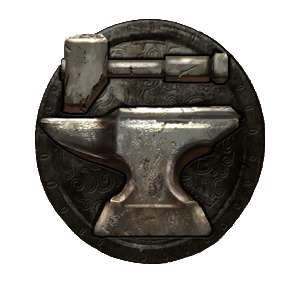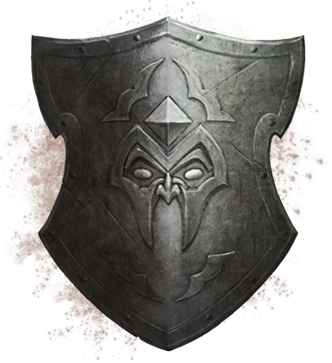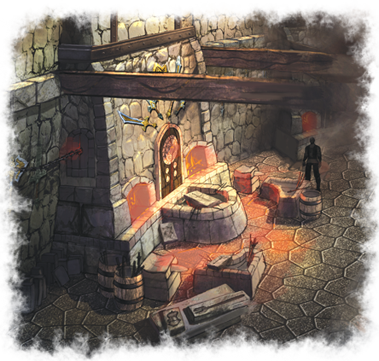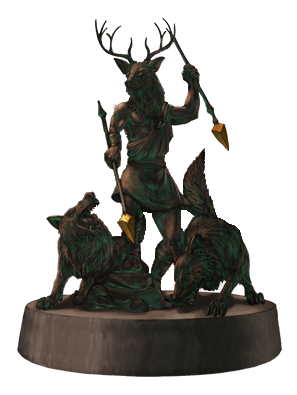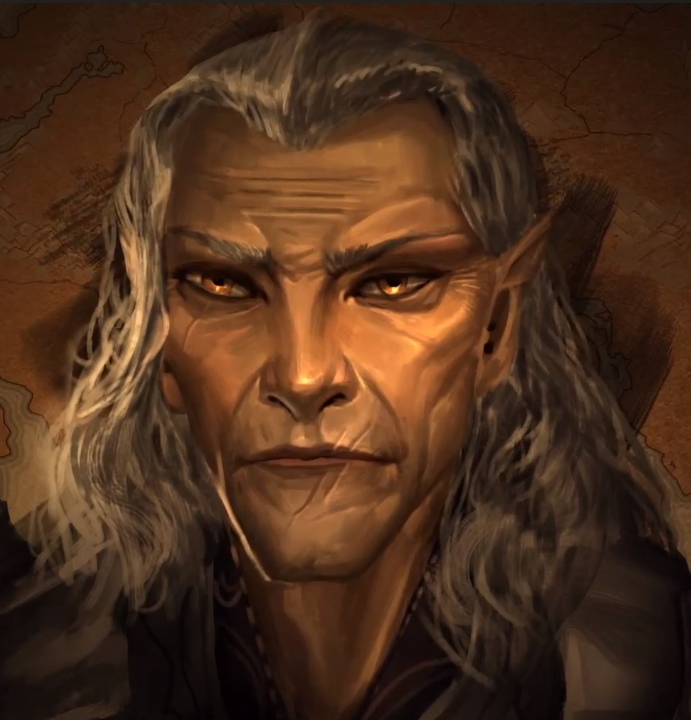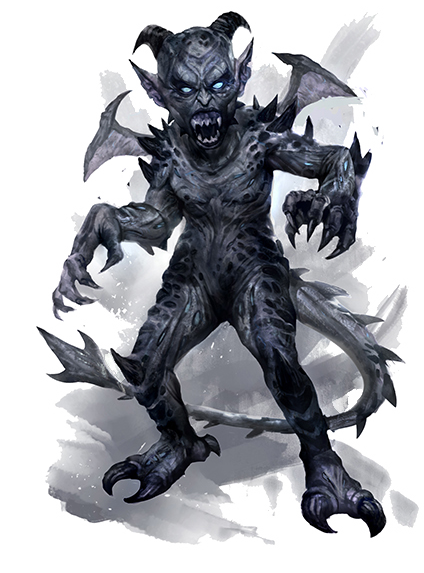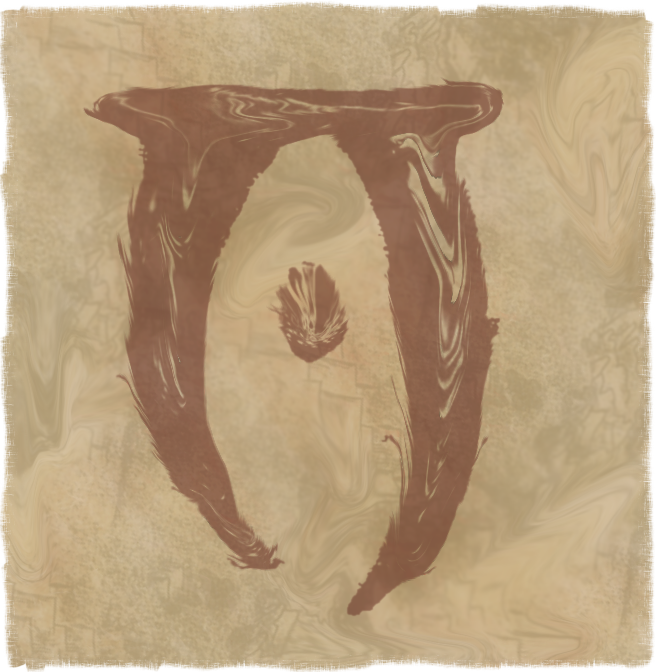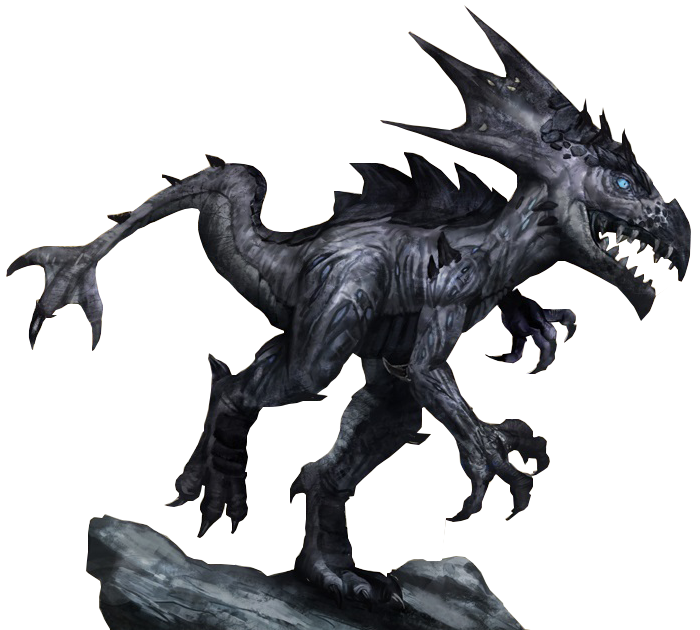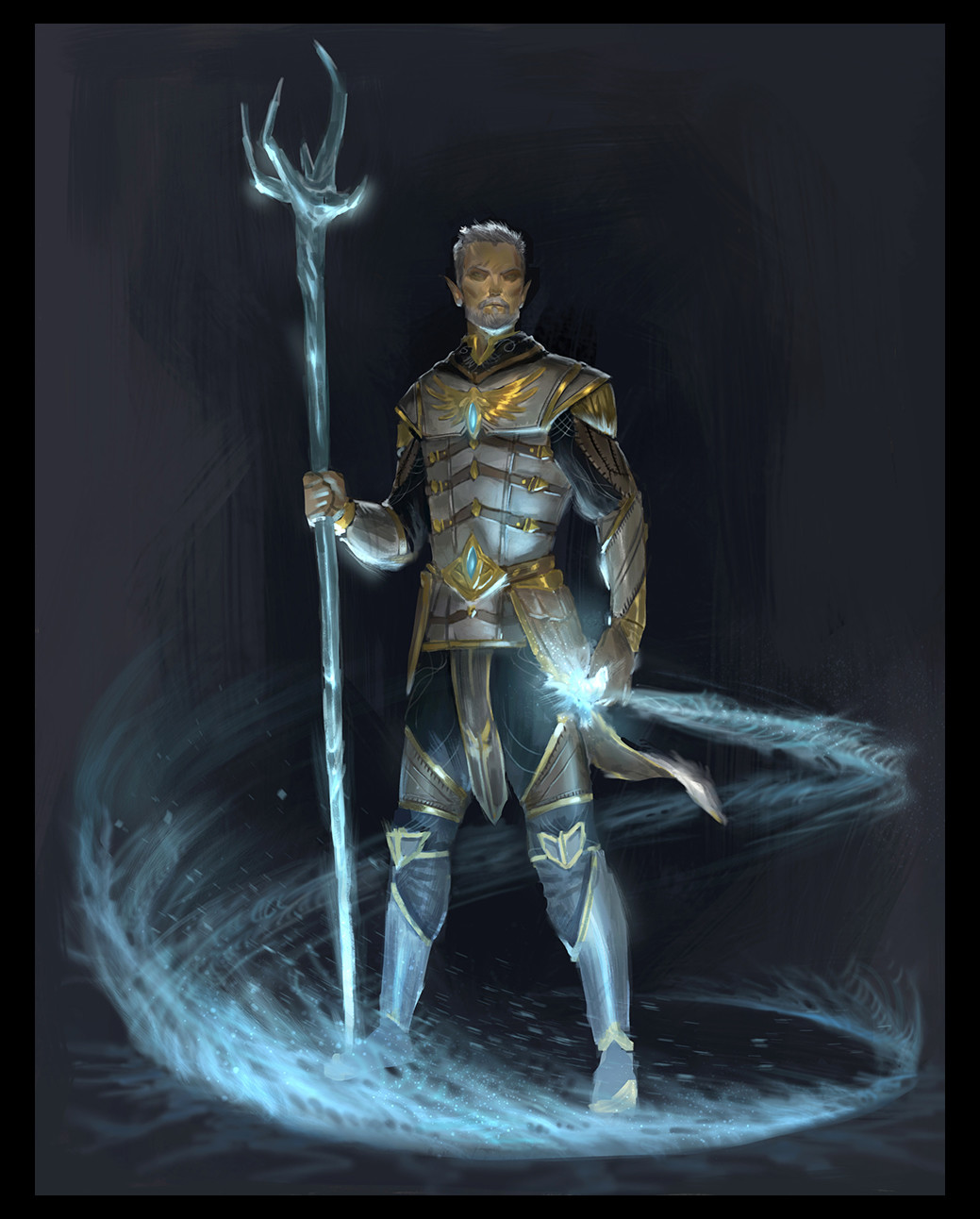The Improved Emperor's Guide to Tamriel/Bangkorai
Original media : The Elder Scrolls Online Imperial Edition
By Flaccus Terentius, of the Imperial Geographic Society, 2E 581
Orcs of the Daggerfall Covenant The air was fresh and the soil firm. Although a little more rugged than the gentle hills and dells of High Rock, northern Bangkorai and the road to Evermore were gradually turning from orange to green, and the climate changed from a beating heat to a more temperate drizzle. Although northern Bangkorai is south of the Bjoulsae River, with a border segmented only on a cartographer's maps, the Redguards don't seem to venture up here; this is still the realm of Bretons. I'd disembarked from the ferry early to clear my head and apply ointment to my brand in private. The relative lushness is of great relief after the arid Alik'r Desert.
I thought I spied a figure in the woods outside Evermore, but on closer inspection, it turned out to be a strange old statue. I cleaned off a little of the moss and started to paint. This Viridian Sentinel seems to represent a guardian of the forest. I'd been double-checking my Imperial Guide on these parts; the statue is revered by the Glenmoril Wyrd. I'm certain they are some distant sisterhood to the Beldama witches I saw cavorting in Glenumbra. But aside from the statue, I found no sign of their presence.
Striding through the robustly unsubtle but impressive Evermore Palace, with its crenelations cleaved from the granite mined from nearby Markarth and hauled here centuries ago, I felt safe and puffed up my chest a little (even though my brand still stung). These buffoons, and servants of their ilk, had welcomed me to their city with a deference I certainly wasn't shown after leaving Sentinel. When presenting my letters of introduction and Writ of Transit to King Eamond, I found him friendly but soft of voice and timid of countenance - not at all the ruler of the wildlands I was expecting. Of course, the king's mumbling welcome, and his weak and colorless demeanor, may have been exacerbated by his thunderous savage of a guest. Sitting by Eamond's side was King Kurog of Orsinium, an Orc who radiated strength from every unwashed pore. "Approach me, Imperial, for you are most welcome in this court!" he shouted (though I later found this to be his normal speaking voice). I stepped forward. Kurog clapped me on the shoulder, and I felt my knees buckle. Stumbling, I almost fell buttocks over pride but steadied myself just in time. The court erupted with laughter as I accidentally became Kurog's jester - the Bretons and Orcs found my slightness of frame deliriously comical. These are typically crude and boisterous provincials.
If King Kurog was a mountain of an Orc with a face like a giant's slapped arse, Eamond's wife, Queen Arzhela, was the very definition of a blooming beauty of Breton womanhood. She dotes on Prince Edrien like a mother hen. The prince is a dashing young man, but one without exploration in his blood. He is set to join the guards on the caravan leaving Evermore for Orsinium this evening, his first adult journey into the wild. Perhaps to make amends for my previous embarrassment, Kurog first showed me almost all of his missing teeth with a grin that would curdle milk, then granted me a writ of passage through Wrothgar with the caravan. I found this to be most acceptable, as it is far safer to travel with strong forces in this agrarian wilderness. Before the journey, I made some preliminary sketches and paintings of the heavy armor and weapons from King Kurog's escort. Though the Orcs wore such regalia without any apparent effort (either physically or magically), I was barely able to lift one of the breastplates. Stendarr, protect my bones if one of those brutes takes a tumble in my general direction.
After fording the trickling Bjoulsae, the caravan rolled northeast, following the Jehanna road into the wild Wrothgar mountains. The Orcs, despite their supposed clumsiness, are not fearful of any drop or fissure. I was content to ride with Loghorz gro-Murtag, one of the king's guardsmen and blacksmiths. He promised a feast that would fill a giant to the bursting point. It was the evening of the second night when we reached Murtag. We were welcomed by Chief Godrun and offered a plate of elk offal I'm still trying to digest and mead from goblets the size of my head. Our mix of Bretons and Orc folk helped dispel any distrust among the clans. I stopped to draw the Chieftain's Hall and Murtag's old forge. Godrun handed me a finely crafted sword and shield. Despite their weight, I accepted these gifts in the spirit to which they were intended. If they stay in the caravan after my departure, I may make it to Skyrim without tearing my guts or breaking my back trying to lift them.
As dawn broke over the stronghold of Murtag, I climbed the trail back to the Jehanna road, perched myself on a rocky outcrop overlooking the encampments, and drew Orcish architecture that was as staunch and sturdy as the crags and peaks of the Orcs' homeland. Eminently defensible, with the mountains shrouding the settlements, these roughly sliced stone and thick wood pilings serve as effective parapets against marauding giants and Reachmen. Wrothgar and northern Hammerfell are dotted with these fortified towns. We climbed east until the trees and air thinned. As I gazed at the clouds below, I realized the grandeur of Akatosh's plans for us mites, scuttling on the shell of the world. I was speaking to my Breton companion, Edgard Thenephan, when the lead caravan stopped and guards approached the still-smoldering frame of a huntsman's refuge. "Reachmen raiders are active in these parts." Edgard leaned in to tell me. He pointed past the wreckage, which was collapsed with only the stone hearth still standing. "Notice the totems? They're here to strike fear into the unwary or feeble-minded." A guard had hauled two charred corpses-one decapitated-from one of the structures. I grimaced at the totems, sticks and trees covered with primitive carvings, skulls, bones … and the head of one of the hunters. "Don't worry, Flaccus." Edgard shouted, tapping his sword to his helm. "We're well armed. Those mongrels only just learned how to light fires!" While the caravan started its journey once more, I breathed deeply to stifle my growing panic. With only two hefty Orc protectors and a narrow rugged path across rifts and ridges, we really should have been more wary.
Edgard was the first to die. A ragged blade, wielded by a ragged man covered in animal skins and wearing an antler headdress, cleaved the poor Breton's head off his shoulders. It took the savage two ghastly attempts. When the Reachman eventually fell to an Orc's battleaxe, our camp was flanked on either side by dozens of dirty despoilers, swarming from the rocks like maggots over a decaying fox. Tents were set ablaze and sleeping guards awoken in the night, only to be slain by the infected swords of the briar-hearted. Prince Edrien, with a look of grim conviction under his helm, was determined to prove his merit. He sallied forth with two lumbering Orcs on either side, and they crashed head-on into the northern wing of the Witchmen. I stayed in my tent, donning my breastplate. Confusion reigned. The cries of falling foes echoed through the valley. Most of the caravan had followed their prince, battling their way to an escape toward Orsinium. To my woe, Stendarr was unmerciful to my own plight, and I was caught with a few other stragglers by the southern flankers. I drew my dagger, fearing the end. A wild-eyed man, with a knot of poisoned briars nestled on his bloody head and a prayer to Hircine spewing forth from his mouth, conjured fire from his hands. We quickly surrendered. I was thrown into a cramped wooden cage with the other captives and was then jostled off at a hurried pace into the wooded peaks to the east: I wondered aloud whether our slaughtered brethren were the lucky ones. I swallowed some corkbulb root to lessen my fretfulness and tried not to watch Edgard's severed head staring back at my cage from its totem spike. His tongue lolled from side to side, spittle and blood dribbling into my wooden prison. I was astonished to be alive and further flabbergasted to keep both my head and my sketchbook intact. This allowed me plenty of time to nervously sketch the Reachmen in their pelts and primitive horned armor, and the crude weaponry that my captors had proved so horrifyingly proficient in wielding. I was bounced and battered around for two more days, privy to their babbling, singing, and in fighting. Our fates were to be decided closer to Markarth. I am one of four surviving captives, but I'm kept apart and am unsure who is alive and who has prayed for - and received - a swift death. Another day of bruised jostling within a prison small enough to drive a skeever mad. More chanting. At evening camp, temporary tents of wood, bone, and hide were put up in a seemingly haphazard way, but these structures are solid and watertight. This is when I'm released from my animal cage, forced into a noisome tent with the other prisoners - two Bretons and an Orc - and a pack of the Reachmen's wolflike hounds. I'd stretch my legs if they weren't shackled. The smell is appalling. The dogs turn their noses up at the food. Truly, I am forsaken.
"Today we honor Hircine!" Shackles were broken and the cage doors opened. Sharp rocks and a sheer drop to the south. Impassible boulders to the north. Baying dogs and frothing Reach-clan worshipers eyed us with wide stares. My captive friends were freed and prodded toward some strewn weapons. I started out for them, but a shaman held me back. "We spare you their fate, outsider." Guilt and relief consumed me. "The Despot of Markarth wishes his portrait painted. Your hands are safe, but you'll be hobbled if you run." As I painted the Reach-clan's banner and their altar to Hircine in his most malevolent form, the hunt began. One Breton bolted and was brought down and set on by dogs. The other ran for the ravine, fell and was hacked apart by blood-crazed wild men. Fragments of his corpse tumbled toward the river below as the feasting began. The Orc simply laughed, yelling, "Blood for Mauloch!" as he snatched up two maces and charged headlong into a cluster of Reachmen. The hair was filled with shrieks of men, the cracking of bones, and the spillage of blood. I saw four mongrels hammered into the earth, their heads misshapen and mangled. When a Briarheart was raised to quell the rampage, the Orc was brought to his knees and his head cut away.
A vile and bitter potion was forced down my gullet. I spent the journey trapped in a helpless delirium. Humble apologies for my inadequate investigation of the great walled city of Markarth. I was unconscious upon arrival and saw only vague shapes (and the inside of a vomit bucket) until my vision and mind finally cleared. It was then that I wished to be returned to my stupor. I was staring into the gaze of a thin and terrible face. An Altmer clad in fine armor, his cloak brushing against a staff of crawling worms. Still light-headed, I inquired whether he was the Despot and if I should retrieve my oil paints (wherever they were). The High Elf laughed, and my memories returned. I had seen these piercing sallow eyes once before on my travels. I felt fear, as if this despoiler were writing within my mind. I was in the presence of evil. "I am Mannimarco," he proclaimed. My chest throbbed as he gestured with his staff, my under-tunic unbuttoning on its own to reveal my scar. "You bear my mark, Flaccus Terentius." He smirked. "Fate brings you to my feet. You are briefly entwined with my affairs. My meeting with the gracious Despot has concluded…" He paused and pointed his staff in my face, the worms crawling through the eyes of the skull pommel. "I have claimed you for my own." Mannimarco leaned in. I shivered as his spittle hit my brow. "You are my vassal." His clawed gauntlets stroked my cheeks. "I have prepared a fate worse than death for you."
Mannimarco had left the stone cell I was kept in, telling me I'd be meeting someone who was "friends with both of us." Uwafa! I knew it. But I was instead greeted by a most familiar dialect. "Flaccus! How have you survived?" For a moment, I felt safe. What was Javad Tharn doing in these parts? Perhaps he had journeyed to hasten my freedom under his uncle's banner. He was, afterall, one of the most talented of our diplomats. My appeals to the younger Tharn seemed to hold water. He called my conditions deplorable. He promised swift action against Mannimarco and my first proper meal for days. And transportation form this place. "But first, take this brew. For your strength." As I pressed my lips to the bottle of fluid, I knew that he lied. My senses swimming, I heard Javad Tharn sneer, "Take him down to Nchuand-Zel. Let the Daedra drag him to Molag Bal."
I woke to warm breath in my face and a stabbing pain in my side. As I looked around a huge cathedral chamber, filled with ancient golden machinery, a wingless imp, the cruel and inquisitive Banekin, was prodding my guts with the end of a Daedric staff. The pack of Banekin had pulled my hair, set fire to my scrolls, and emptied my belongings and were breaking them, one by one. They fled to the shadows after a braying echoed through the room. I was thrown and bound to a stone table, near an old Dwarven forge (its embers glowed with immense heat). A tall and powerful figure was working the bellows. To her side lay several horribly sharp weapons, all recent creations of this Dremora. Memories of my torture at the claws of the Caitiff are hazy and incomplete. She snatched a blade and wielded it expertly in the air for a few moments. Then she stepped to my side, fixing what appeared to be a bridle around my face and across my mouth. Then she spoke to me: "The candle inside your head is slowly going out." She opened my jerkin, cut through my shirt, and twisted her sharp blade into my side. I bit down on the iron rod as the cutting continued across my stomach. I glanced down at myself and passed out.
I didn't expect to wake again, but I did. The forge was out, and the Dremora was away, probably presenting her work to an unknown master. I was freed, but my midriff was torn and still bleeding. I staunched the flow with my clothing. Then I heard the baying. I watched the Banekin and Clannfear approach. They nudged my legs before one snapped its jaws onto my boot. I shook it off and stumbled into the dark, harried by my pursuers. I was pushed, bitten, and thrown between these low minions. I'd have finished myself if I'd had a blade to hand.
I had crawled over fallen pillars to a high corner. But I misjudged my escape, and the Clannfear were nipping at my heels. Hope seemed to vanish. But then...an immense flash of magical power filled the room. Clannfear and Banekin cowered, sensing the presence of fearsome power. A short incantation later, and all my beastly pursuers were caught in a maelstrom around the flowing robes of a wizard. Runes flashed and arc lightning escaped from his fingers, searing through Daedric flesh. The mage split into three forms, each focusing their powerful shock bolts on the reeling Banekin. They were instantly reduced to dust. A strange, snaking magic beast rose around the magician's bright-white form, then swept the chamber in a roar of wind and terror. No Daedra was left standing. Then came more thunder, and a small black cloud of vivid energy sparked and rumbled. At this point, the ancient Dwemer walls themselves were in danger of collapse. "Mannimarco, you snake!" the robed Altmer yelled. "How have you escaped me again? How long must Vanus Galerion pursue you?" Moments later, my physical wounds were all but healed. As I drank from a potion Galerion provided, I felt well enough to speak. "Your thanks and admiration for me are the most kind," he interrupted, incorrectly guessing my silenced words. He spied my journal, floated the book in front of his face, and turned the pages in the air, "Oh, how wonderful. A portrait painter of some skill!" he exclaimed. I desperately needed rest. Instead, I was obliged to gather and unpack what was left of my art equipment. For the next few hours I toiled in discomfort, sketching Galerion's incantations rather than fully recuperating my wracked bones. "Did you paint all my most mighty of attacks in your little scrapbook?" Before I could respond, Galerion took my journal and stared intensely at the last pages for a moment. "No, the Summoning Storm looks too feeble. Here." With that, he sealed the pages I had sketched and spent the next hour diagraming his spellcasting talents, consuming the mauve and black charcoal with little regard to my supplies. The results lie across these pages. Meanwhile, I drew his portrait. He pondered my results for a moment, distorted my art so his face appeared more majestic, and handed the parchment back. Then he unwrapped and tucked into a cooked goat leg. My gratitude for a welcome rescue had been tempered by his tampering of my prized book. Whatever defacements he had made, they were coated with a substance my erasers could not rub through. Dabbing meat grease from his top lip with an embroidered handkerchief, Vanus Galerion threw the half-eaten meal to the floor and retrieved his staff. Further work awaits us in Skyrim," he cried, "to Windhelm!"
|
